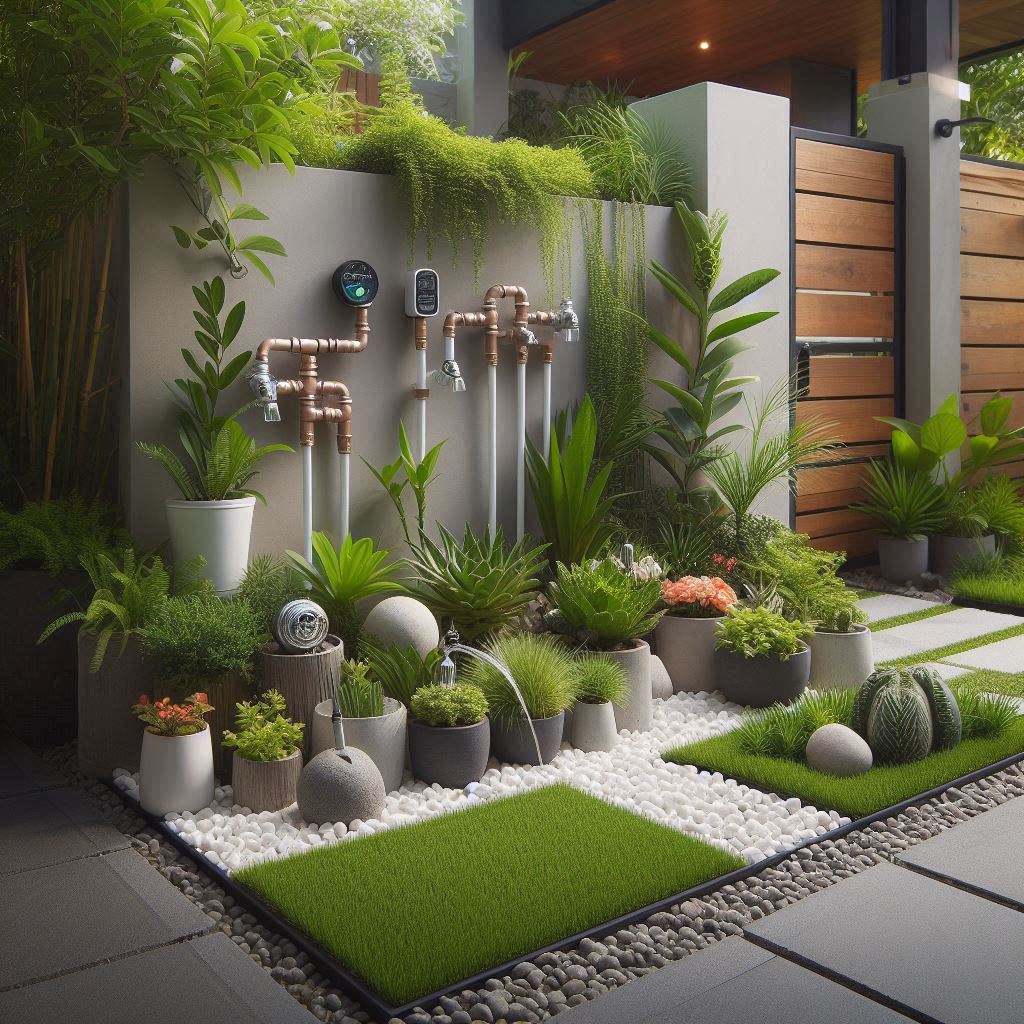Let’s face it, yard work can be a real chore. Between mowing the lawn, battling weeds, and constantly watering thirsty plants, it can feel like you spend more time maintaining your outdoor space than enjoying it. But what if there was a way to have a beautiful and inviting yard without the backbreaking effort? The concept of lazy landscaping is a landscaping approach designed to minimize maintenance while maximizing beauty.
Lazy landscaping isn’t just about being idle; it’s about working smarter, not harder. By implementing a few simple strategies, you can create a yard that thrives with minimal effort, freeing up your time for the things you truly enjoy. So, grab a hammock, fire up the grill, and get ready to transform your yard into a haven of relaxation with these 19 lazy landscaping ideas:
1. Reduce Your Lawn (Say Goodbye to Mowing!)

The sprawling, perfectly manicured lawn is a classic image, but it’s also incredibly high-maintenance. The good news? You can achieve a stunning yard with significantly less lawn space. Here’s how:
- Embrace the benefits: Less lawn means less mowing, less watering, and less fertilizing – all translating to more time relaxing and less money spent on yard care products.
- Think outside the grass: Consider replacing some of your lawn with alternative groundcovers like creeping thyme, colorful perennials, or low-growing shrubs. These options add visual interest and require minimal upkeep.
- Create designated areas: Dedicate space for patios, decks, or walkways made from gravel, pavers, or flagstone. Not only do these features provide areas for entertaining and relaxation, but they also eliminate the need for mowing in those spots.
2. Embrace the Power of Perennials

Tired of planting annuals that need replacing every year? Perennials are your low-maintenance heroes. These beauties come back year after بعد (baعد, after) year, requiring minimal effort for a season-long display of color and texture.
- Perennial power: Perennials establish themselves in their first year and return bigger and bolder each season. This eliminates the need for annual planting and saves you money in the long run.
- Picking the perfect perennials: Choose perennials suited to your climate zone and sunlight conditions. Some low-maintenance options include daylilies, lavender, Russian sage, coreopsis, and ornamental grasses.
- Planting for success: While perennials are generally low-maintenance, proper planting ensures long-term success. Choose a suitable location, amend your soil if necessary, and provide adequate initial watering. Once established, most perennials require minimal watering and thrive with neglect.
3. Go Native with Native Plants

Mother Nature knows best! Native plants are those that have evolved to thrive in your specific region. They offer a plethora of advantages for a lazy landscaper:
- Adapted for success: Native plants are naturally suited to your local climate, soil conditions, and rainfall patterns. This translates to less need for watering, fertilizing, and pest control.
- Beauty and benefits: Native plants not only provide a stunning display of flowers and foliage but also attract beneficial insects like butterflies and pollinators, creating a healthy ecosystem in your yard.
- Finding your native friends: Many local nurseries and gardening centers offer native plant selections. You can also search online for resources specific to your region that can guide you towards the perfect native plants for your lazy landscape.
4. Mulch Mania: Suppress Weeds and Retain Moisture

Mulch is your best friend in the lazy landscaping world. This layer of material spread around your plants offers a multitude of benefits:
- Weed warrior: Mulch acts as a physical barrier, suppressing weeds and preventing them from stealing precious nutrients and water from your plants. This translates to less time spent weeding and more time relaxing.
- Moisture maestro: Mulch helps retain moisture in the soil, reducing the need for frequent watering, especially during hot and dry periods.
- Mulch matters: When choosing mulch, you have two main options: organic and inorganic. Organic mulch, like wood chips or shredded bark, decomposes over time, adding nutrients to the soil. Inorganic options, like gravel or crushed rock, are more permanent but offer less nutrient value. Consider your needs and aesthetics when making your selection.
- Mulching tips: Apply a 2-3 inch layer of mulch around your plants, leaving a few inches of space around the base of the plant stem to prevent rot. Replenish mulch as needed, typically every year or two for organic mulch.
5. Let it Rock! (Gravel Gardens)
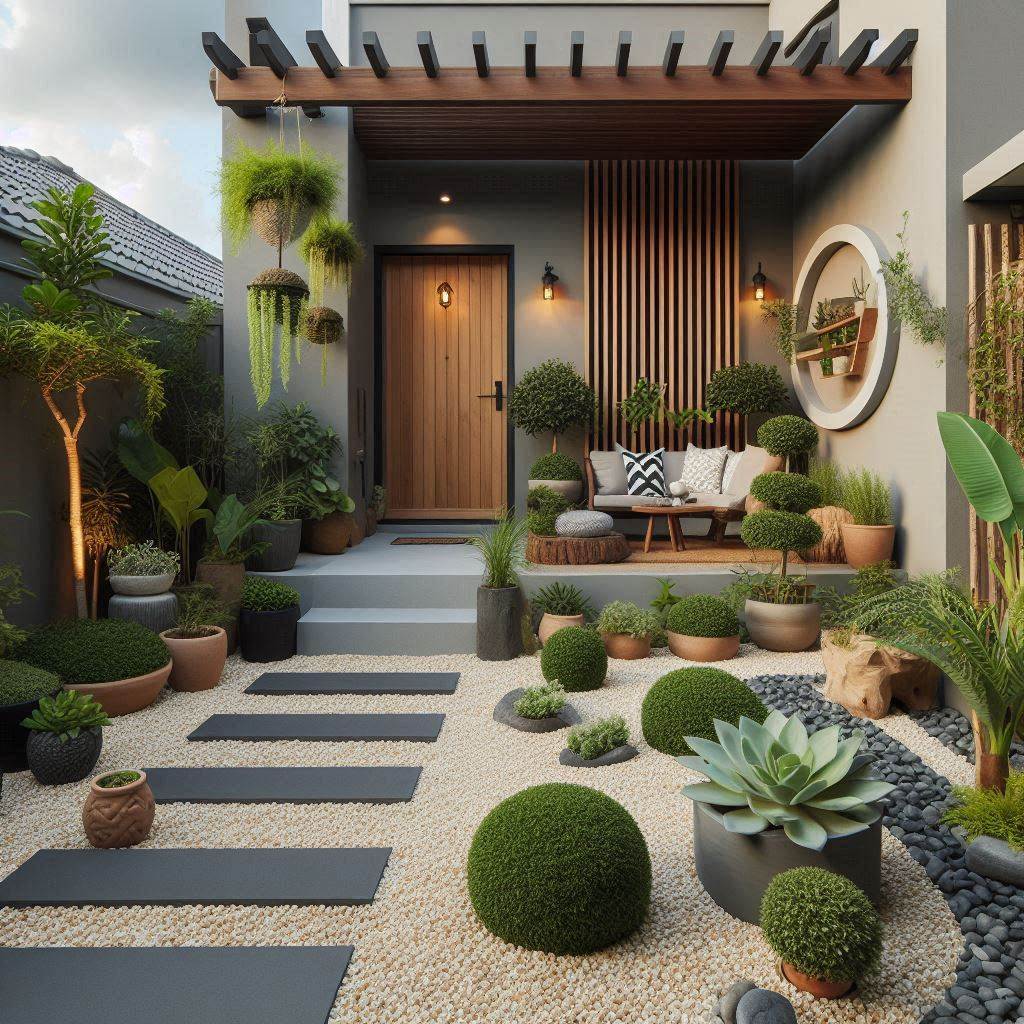
Gravel gardens are a fantastic option for lazy landscapers seeking a low-maintenance and visually striking solution. Here’s what you need to know:
- The gravel garden advantage: Gravel gardens require minimal watering, weeding, and maintenance. They provide excellent drainage and are perfect for areas with poor soil quality.
- Choosing the right gravel: Opt for pea gravel or decomposed granite for a clean and attractive look. Avoid using rounded river rock, as it can create an uneven surface and make walking uncomfortable.
- Planting powerhouses for gravel: Select drought-tolerant plants that thrive in well-drained environments. Some excellent options include succulents, ornamental grasses, cacti, yarrow, and certain sedums.
- Creating your gravel garden: Prepare the area by laying down landscaping fabric to suppress weeds. Add a layer of gravel, typically 2-4 inches deep, depending on the size of your plants and the desired aesthetic. Ensure proper drainage for excess water to escape.
6. Evergreens for Year-Round Interest

Evergreen plants are the ultimate low-maintenance heroes, providing structure and visual interest throughout the year, even during the winter months. Here’s how to incorporate them into your lazy landscape:
- The evergreen advantage: Evergreens retain their foliage year-round, eliminating the need for annual planting and cleanup. They offer a lush, green backdrop, adding a touch of life to your yard even in the off-season.
- Evergreen options galore: Choose evergreen shrubs for borders and foundation plantings, like boxwood, holly, or viburnum. Opt for evergreen groundcovers like creeping juniper or pachysandra for a low-maintenance carpet of green. Consider evergreen trees like pines, spruces, or firs for a touch of majesty and year-round structure.
- Planting and care: While evergreens are generally low-maintenance, proper planting and occasional pruning are essential. Ensure they receive adequate water during their first year of establishment. Prune as needed to maintain their desired shape and size.
7. Automate Where Possible
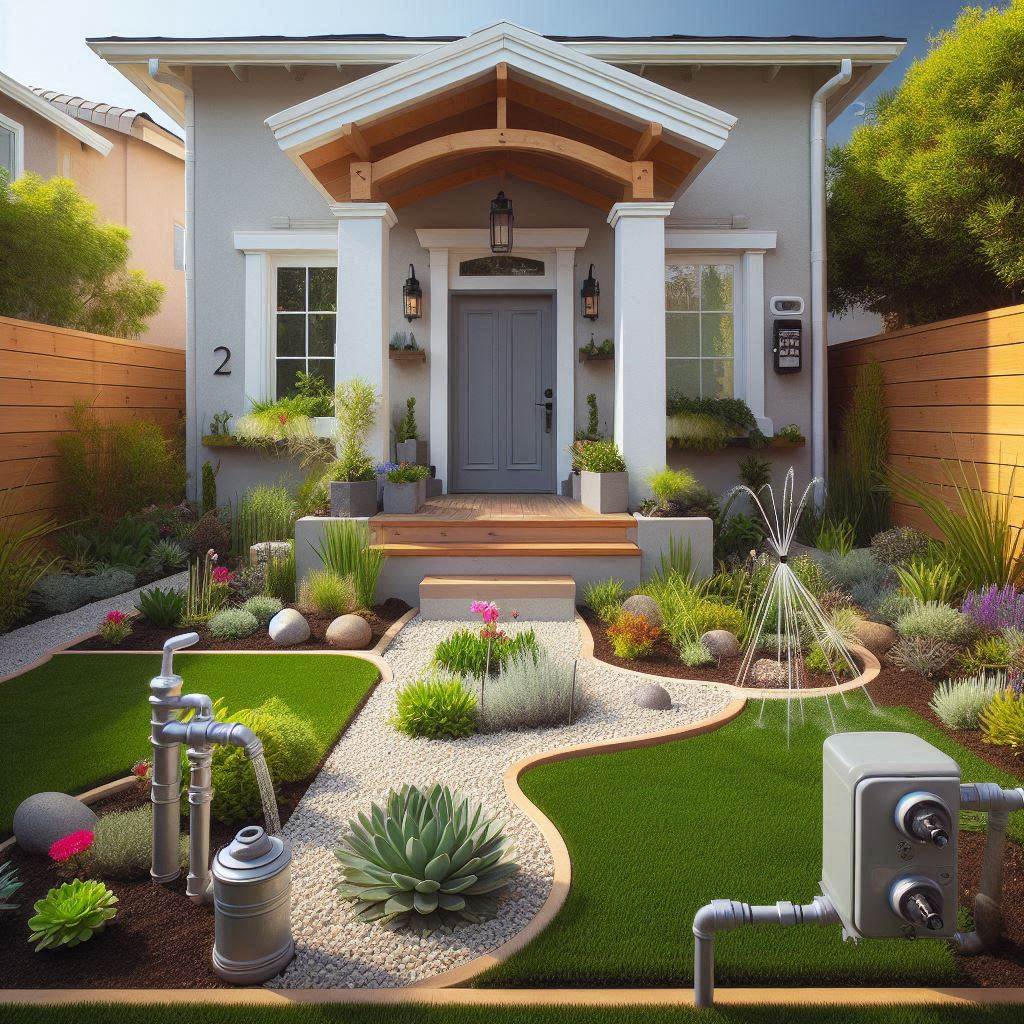
Technology can be your ally in maintaining a lazy landscape. Consider these options:
- Irrigation systems: An automated irrigation system takes the guesswork out of watering your plants. Set it on a timer to deliver the perfect amount of water at the right frequency, saving you time and ensuring your plants stay hydrated.
- Smart features: Explore smart sprinkler systems that connect to weather data and adjust watering schedules based on rainfall and temperature, further minimizing your efforts.
8. Embrace Groundcovers: Living Carpets for Minimal Effort
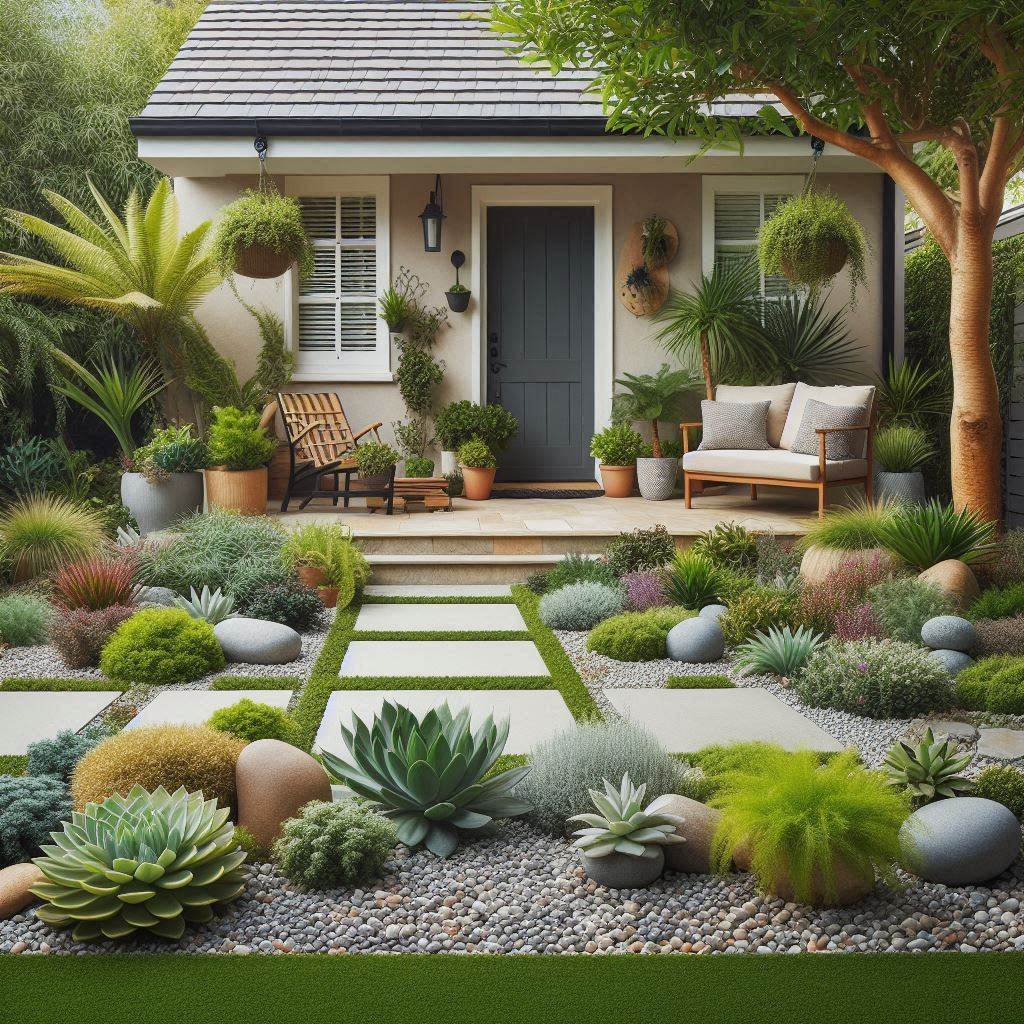
Groundcovers are low-growing plants that spread to form a dense carpet, effectively suppressing weeds and minimizing the need for bare soil areas. Here’s why they’re perfect for lazy landscaping:
- Weed warriors: Groundcovers act as a living mulch, smothering weeds and preventing them from establishing themselves. This eliminates the need for backbreaking weeding sessions.
- Water wise: Many groundcovers are drought-tolerant, requiring minimal watering once established.
- Variety galore: Choose from a wide variety of groundcover options, including flowering varieties like creeping phlox or ajuga, colorful foliage options like variegated liriope, or even low-growing evergreens like creeping juniper. Select plants that suit your sun exposure and soil conditions.
- Planting power: Planting groundcovers is relatively simple. Spread them out over the prepared area, ensuring good contact with the soil. Water them regularly during their first growing season until established.
9. Xeriscaping: Water-Wise Landscaping for the Arid Soul
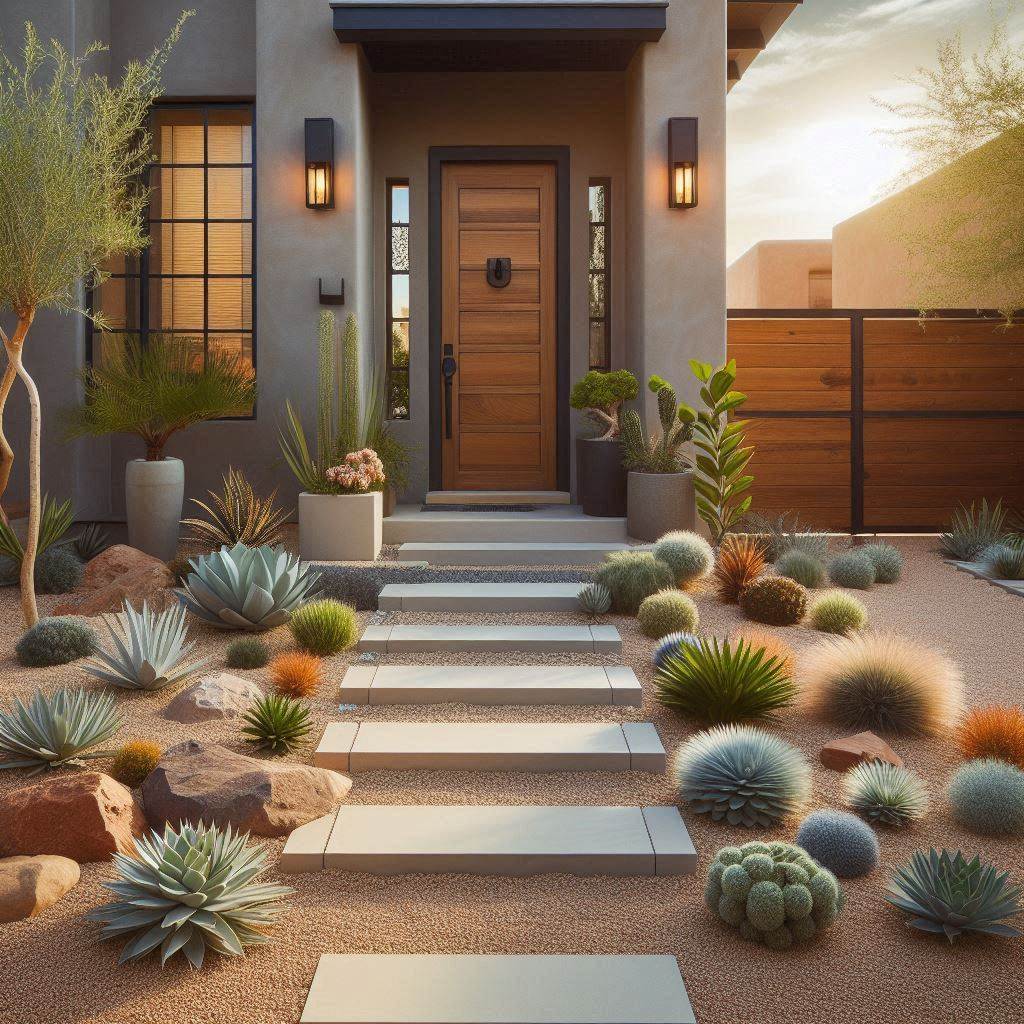
Xeriscaping is a landscaping approach specifically designed for water conservation. It’s perfect for lazy landscapers in arid or drought-prone regions. Here’s how to embrace xeriscaping principles:
- Right plant, right place: Choose plants native to your climate that are naturally adapted to survive with minimal rainfall. Research drought-tolerant options like cacti, succulents, ornamental grasses, and certain perennials like lavender and yarrow.
- Soil matters: Amend your soil with organic matter to improve water retention and drainage. Consider using a layer of decomposed granite or gravel on top of the soil to further reduce evaporation.
- Mulch magic: As always, mulch is your friend! Apply a layer of organic mulch around your plants to retain moisture and suppress weeds.
- Watering wisdom: Focus on deep watering less frequently instead of shallow, daily watering. This encourages plants to develop deep root systems, making them more drought-tolerant.
10. Let There Be Light: Utilize Solar Power for Effortless Illumination
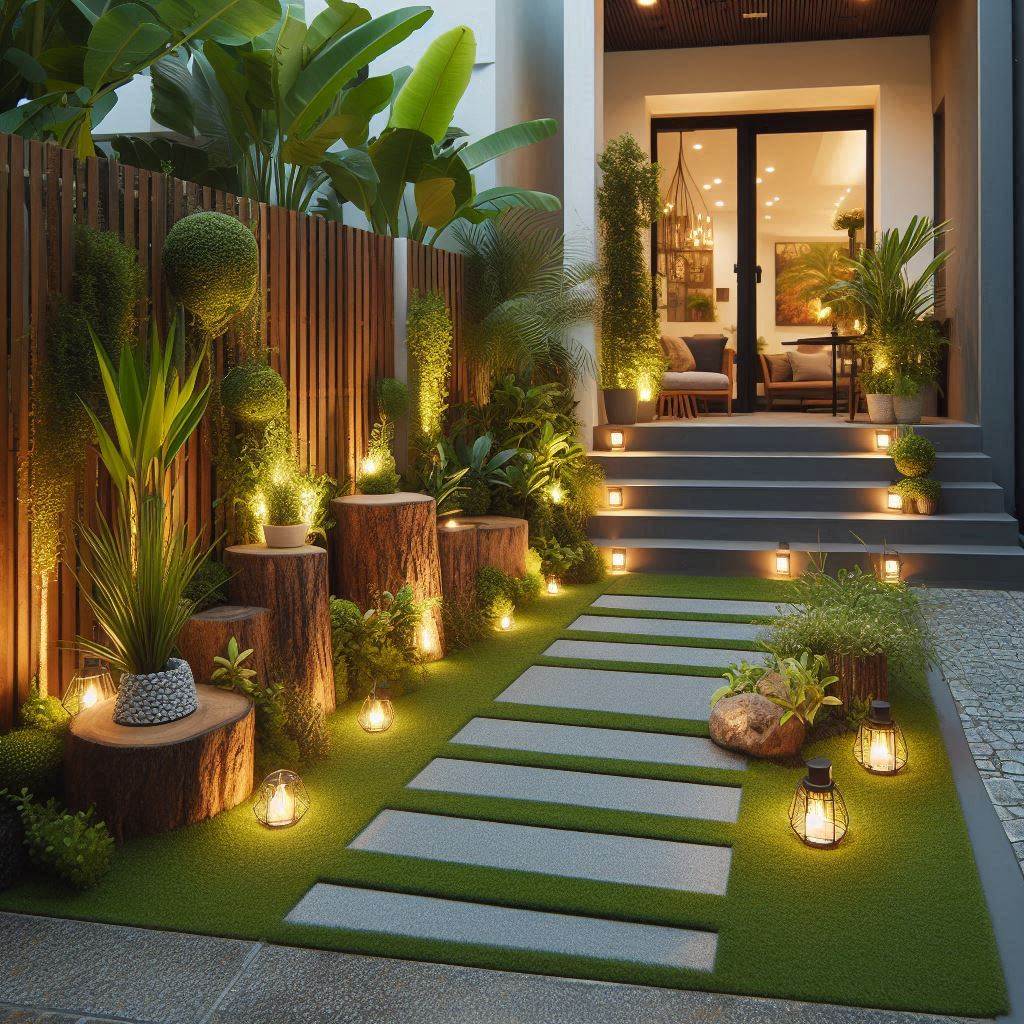
Solar-powered landscape lighting adds a touch of magic and ambiance to your lazy landscape without the hassle of electrical wiring. Here’s how to embrace solar lighting:
- Daylight duties: Solar lights soak up the sun’s rays during the day and automatically illuminate your walkways, patios, or garden features at night. No need to worry about timers or running extension cords.
- Variety is key: Choose from a wide variety of solar lights, including path lights, spotlights, string lights, and even solar-powered lanterns. Create a customized lighting scheme that enhances your lazy landscape’s beauty and functionality.
- Placement matters: Position your solar lights in areas that receive adequate sunlight during the day for optimal charging. Consider the desired effect – path lights for safety and navigation, or spotlights to highlight specific features in your yard.
11. Create Defined Planting Beds for Easy Maintenance
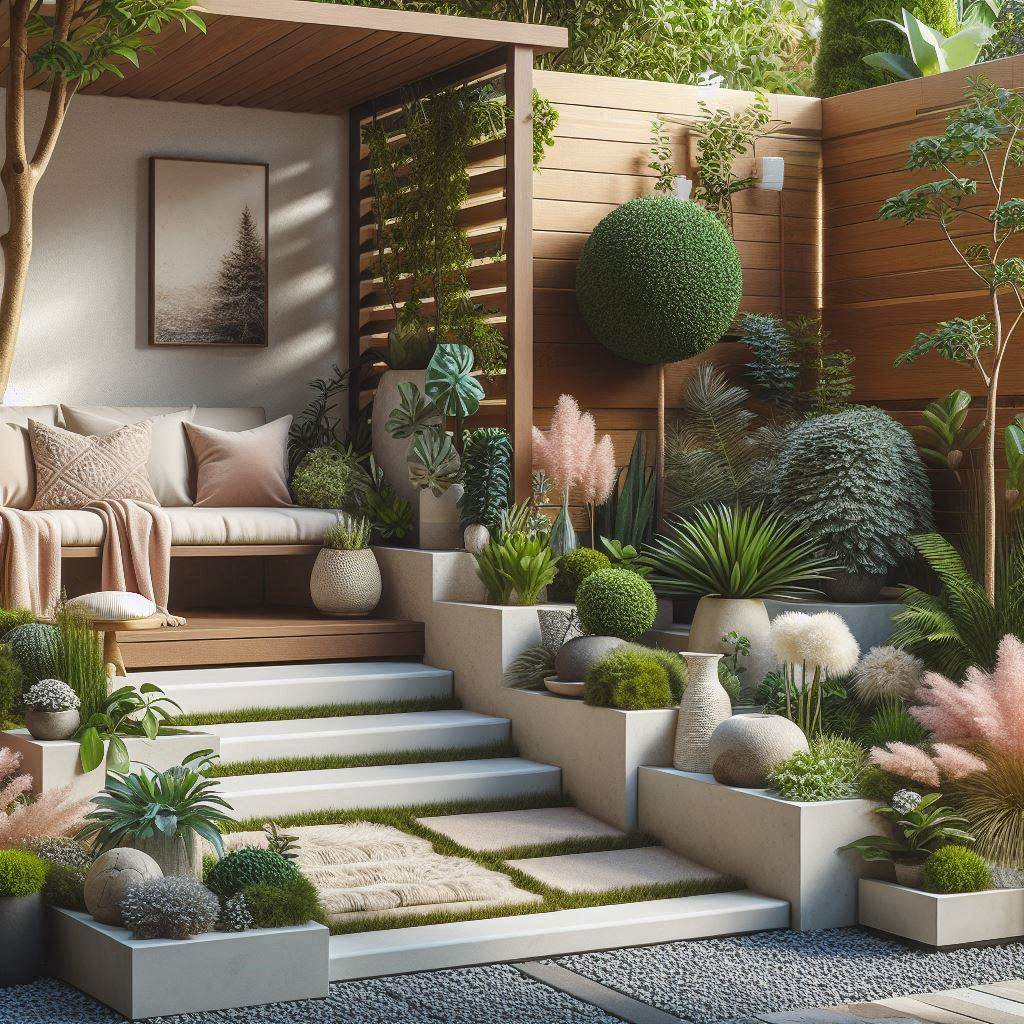
Define your planting beds with edging materials like bricks, stones, or even metal edging. This creates a clean and organized look, while also offering several benefits for lazy landscaping:
- Weed control barrier: Edging helps prevent weeds from creeping into your planting beds from surrounding areas, reducing the need for weeding.
- Mulch containment: Edging keeps your mulch contained within the designated planting area, preventing it from spilling over onto walkways or driveways. This minimizes the need for frequent mulching touch-ups.
- Visual appeal: Defined planting beds create a sense of order and structure in your lazy landscape, adding a touch of sophistication with minimal effort.
12. Embrace Climbing Vines for Vertical Interest
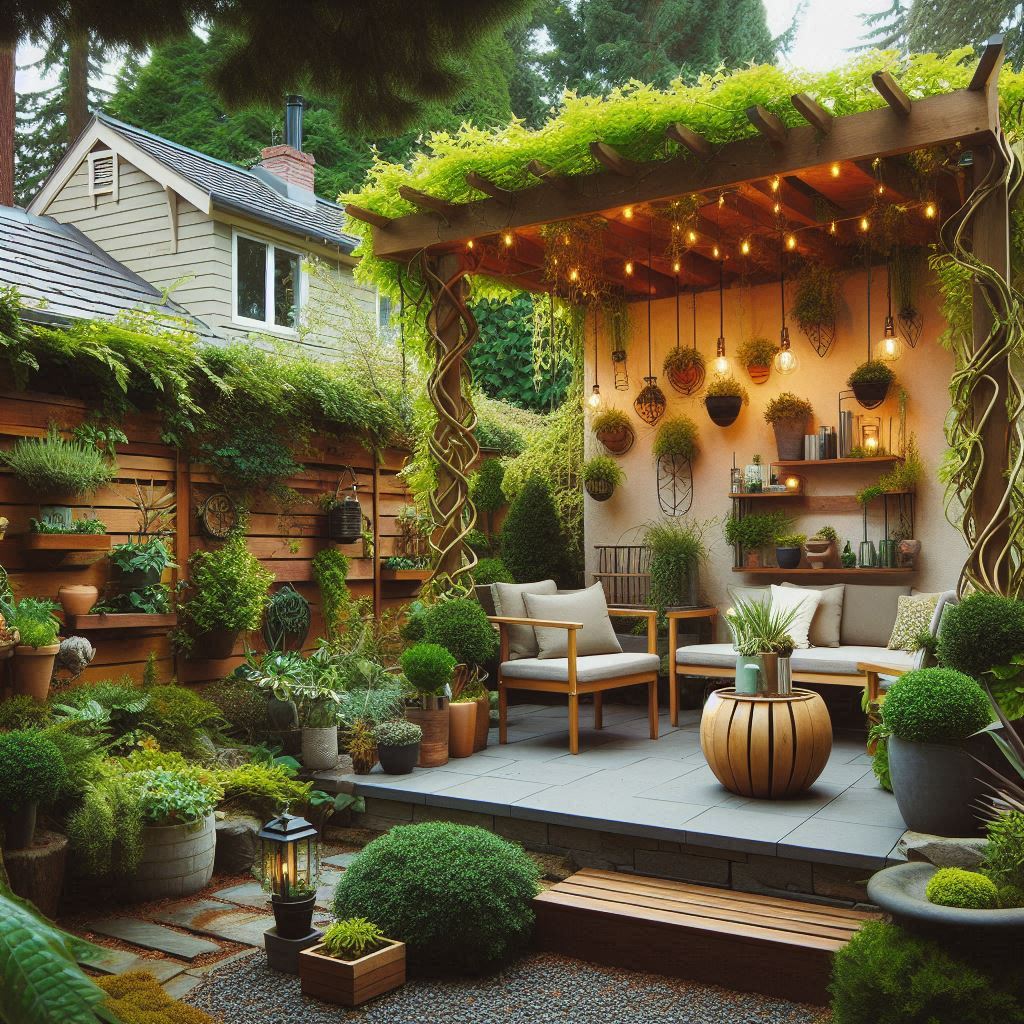
Vines are a fantastic way to add vertical interest and soften hard surfaces like walls or fences in your lazy landscape. Here’s how to utilize them effectively:
- Low-maintenance options: Opt for fast-growing, low-maintenance vines like clematis, Virginia creeper, or honeysuckle. These varieties require minimal pruning and thrive with neglect.
- Strategic placement: Train vines to climb on walls, fences, trellises, or even pergolas. This creates privacy screens, adds shade to patios, or simply enhances the visual appeal of your outdoor space.
- Support systems: Provide appropriate support structures for your chosen vines. Trellises, latticework, or sturdy wires can guide the growth of your vines and create a visually pleasing effect.
13. Container Gardening: A Portable Paradise for Plant Enthusiasts
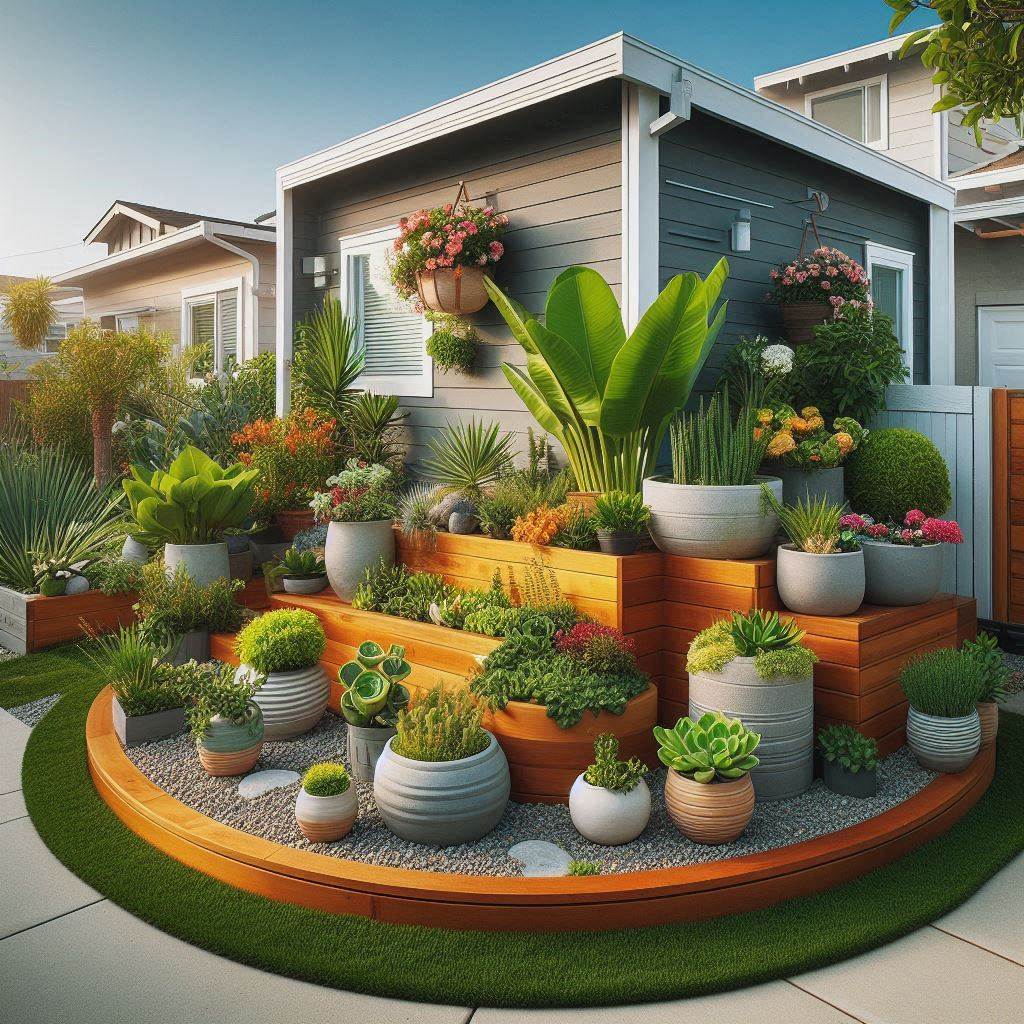
Container gardening allows you to create miniaturized gardens on your patio, deck, or even walkways. This is perfect for lazy landscapers who enjoy the beauty of plants but might have limited space or desire for traditional in-ground gardens.
- Plant variety galore: Experiment with a wide variety of plants in containers, including flowering annuals, colorful perennials, herbs, or even dwarf shrubs and small trees. Choose plants suited to the amount of sunlight the container will receive.
- Potting power: Select containers with drainage holes to prevent waterlogging. Opt for materials like terracotta, glazed ceramic, or even recycled plastic pots that suit your style and budget.
- Watering wisdom: Containers tend to dry out faster than in-ground plantings. Water your container plants regularly, especially during hot weather. Consider self-watering containers for added convenience.
- Portable paradise: The beauty of container gardens is their flexibility. Move them around your patio or deck to create different seating arrangements or seasonal displays.
14. Embrace Hardscapes for Low-Maintenance Appeal
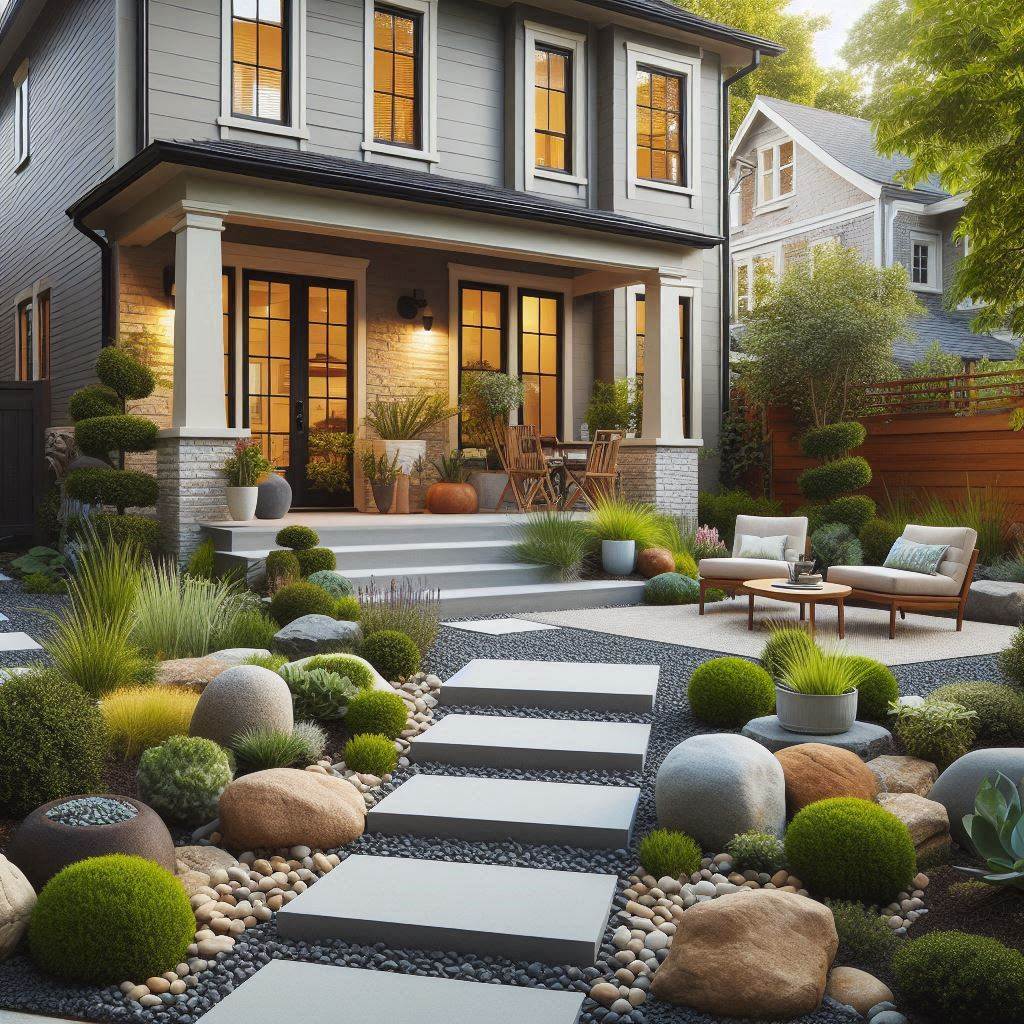
Hardscaping elements like patios, walkways, and retaining walls add structure, functionality, and visual interest to your lazy landscape. Here’s how to utilize them effectively:
- Low-maintenance materials: Choose hardscaping materials that require minimal upkeep, such as pavers, flagstone, or gravel. Avoid materials like wood that require regular staining or sealing.
- Define your space: Patios and walkways create designated areas for entertaining, relaxing, or navigating your yard. Retaining walls can add visual interest and help with slope management.
- Professional touch (optional): Consider hiring a professional landscaper to install hardscape elements, especially for complex projects like retaining walls. However, simple walkways or patios can be DIY projects for the handy homeowner.
15. Attract Beneficial Wildlife: A Natural Approach to Pest Control
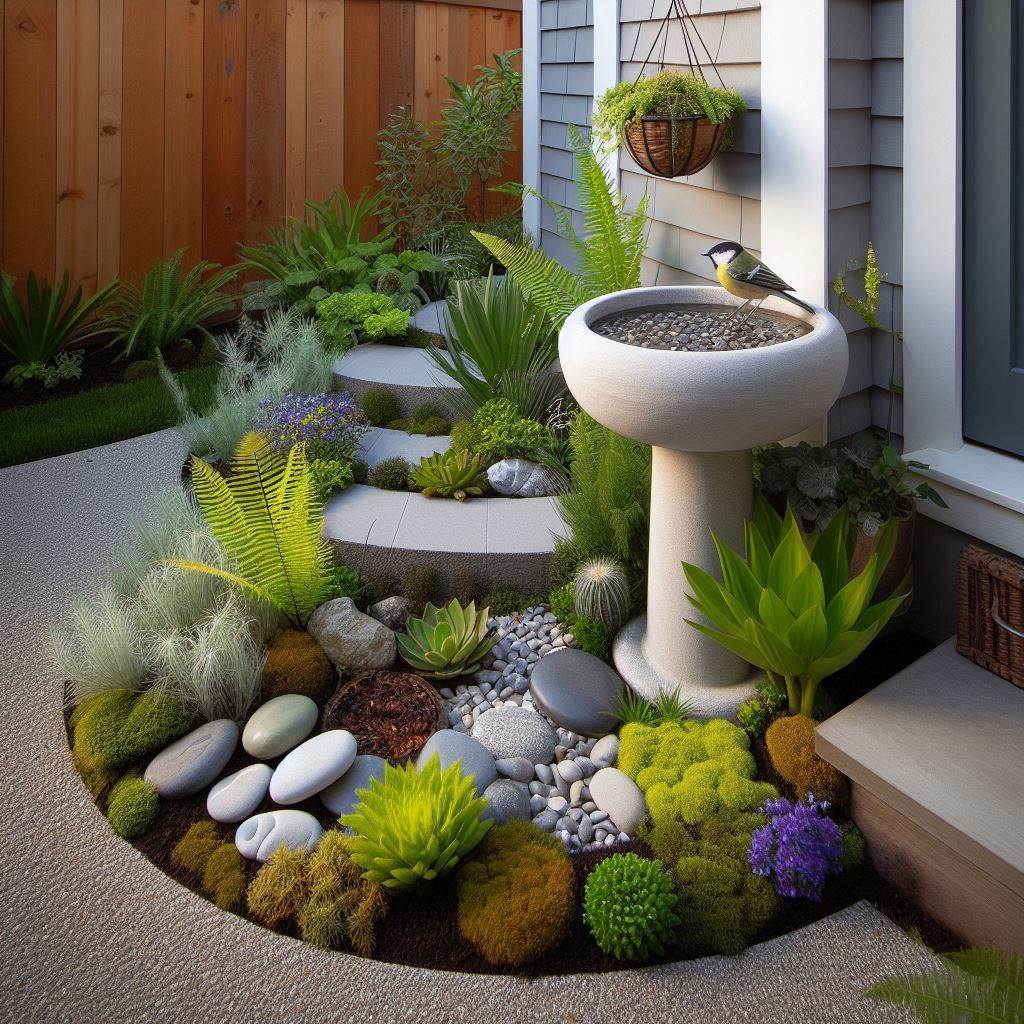
Creating a haven for beneficial insects and pollinators like ladybugs, butterflies, and birds can help keep your lazy landscape free of harmful pests naturally. Here’s how to attract these helpful allies:
- Plant a buffet: Fill your yard with flowering plants, herbs, and native species that provide pollen and nectar for beneficial insects.
- Water feature wonder: Add a birdbath or small pond to attract birds that will help control insect populations.
- Shelter from the storm: Provide nesting boxes or birdhouses for birds to raise their young. A well-maintained lazy landscape can become a thriving ecosystem for beneficial wildlife.
16. Embrace Natural Materials for an Organic Aesthetic
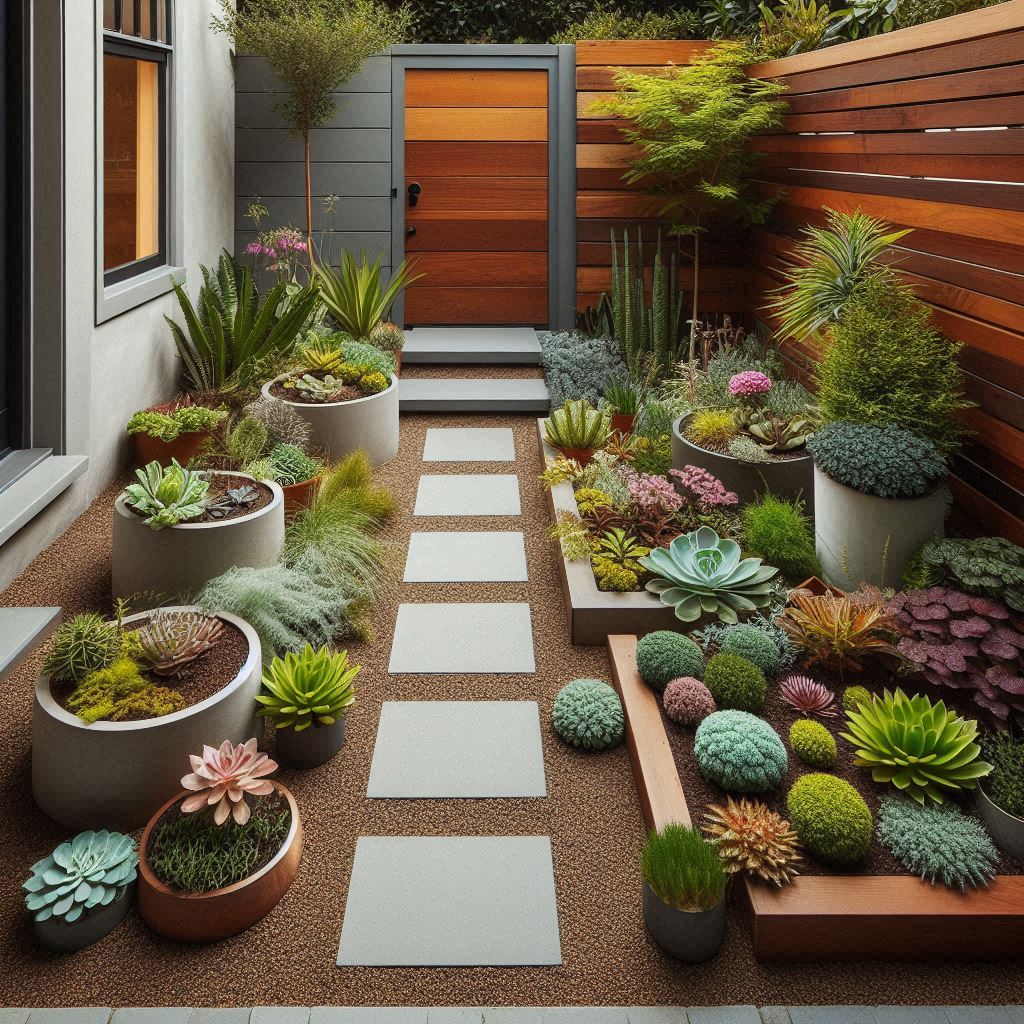
Incorporate natural materials like wood, stone, and even recycled elements into your lazy landscape design for an organic and visually appealing effect. Here’s how to utilize them effectively:
- Rustic charm: Utilize natural wood for edging, benches, or even raised garden beds. Opt for rot-resistant wood varieties or apply a sealant for increased longevity.
- Stone serenity: Stones of various sizes and textures can be used for pathways, edging, or even creating dry creek beds that add visual interest and improve drainage.
- Recycle and reuse: Upcycle old furniture, planters, or even wine bottles to create unique and functional elements in your lazy landscape.
17. Embrace Low-Maintenance Lawns (if you must have some grass)
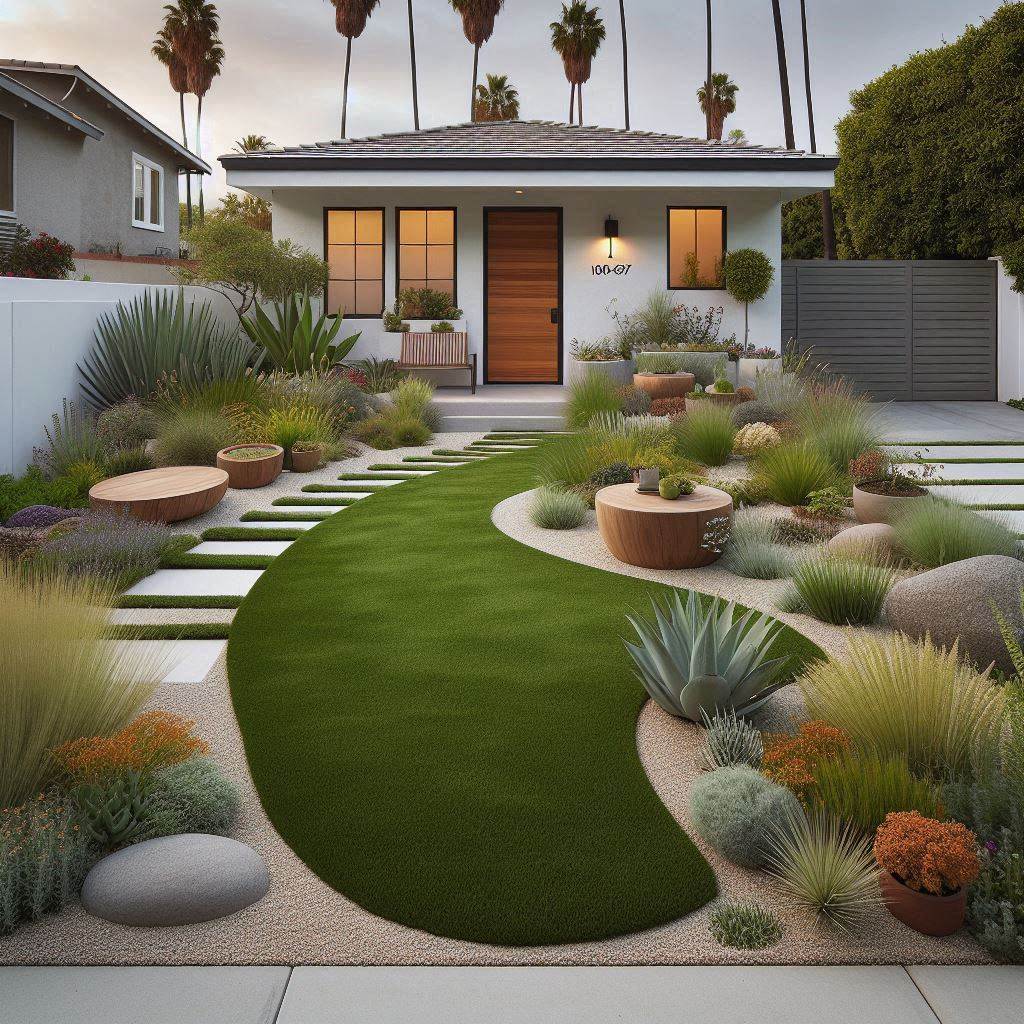
If you’re still attached to having some lawn space, there are ways to make it more low-maintenance. Here are some tips:
- Grass type matters: Choose drought-tolerant grass varieties that require less frequent watering. Consider alternatives like native buffalo grass or fescues.
- Mow smarter, not harder: Raise your mower blade height – taller grass shades the soil, reduces evaporation, and helps suppress weeds.
- Leave the clippings: Grass clippings decompose and return nutrients to the soil, reducing the need for fertilizer. Additionally, it can act as a natural mulch, suppressing weeds and retaining moisture.
18. Let Nature Take Its Course: Embrace Wildflowers for a Low-Maintenance Meadow
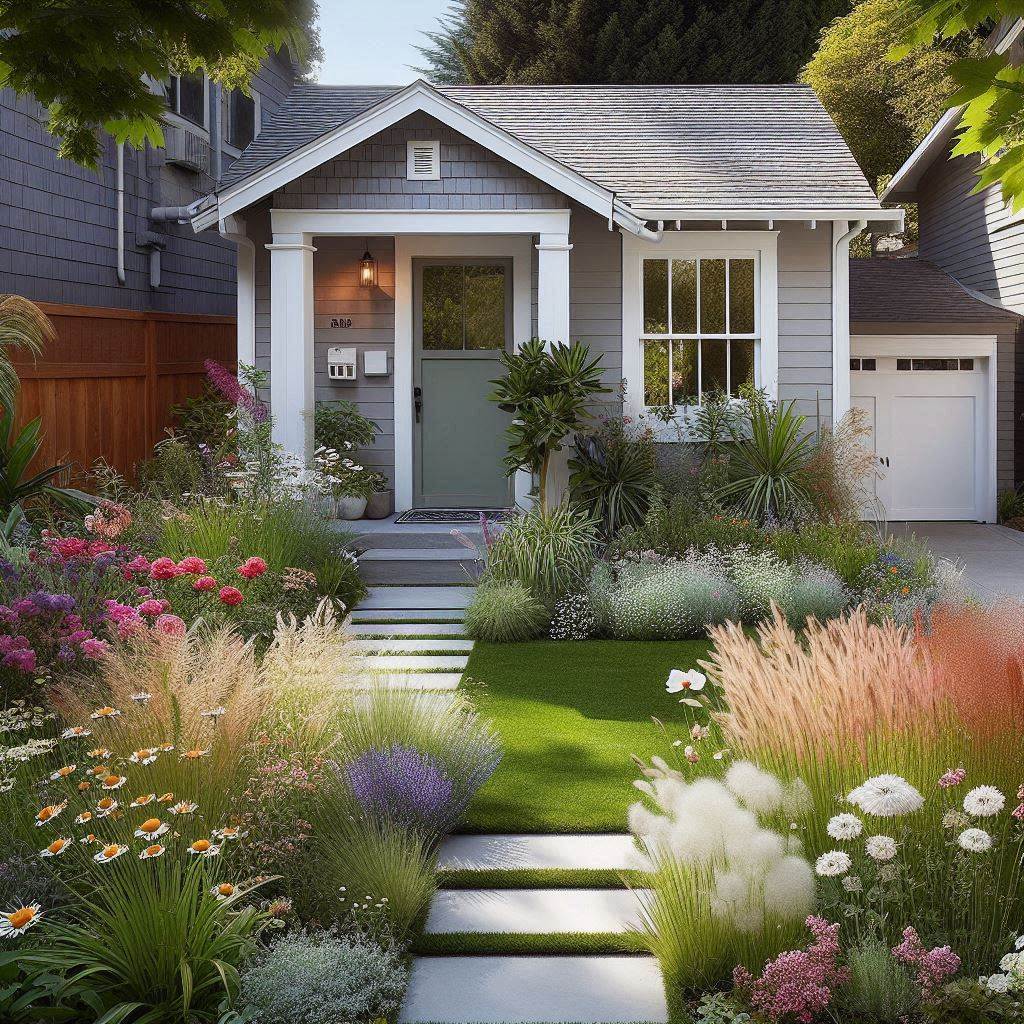
- Wildflower wonder: For a truly low-maintenance approach, consider creating a wildflower meadow. Sow a mix of native wildflowers suited to your climate. These beauties require minimal care and provide a burst of color and a haven for pollinators throughout the blooming season.
- Preparation is key: Before sowing wildflowers, prepare the area by removing any existing vegetation and amending the soil to promote good drainage. Follow the specific sowing instructions for your chosen wildflower mix to ensure optimal germination.
19. Embrace Natural Pest Control Methods
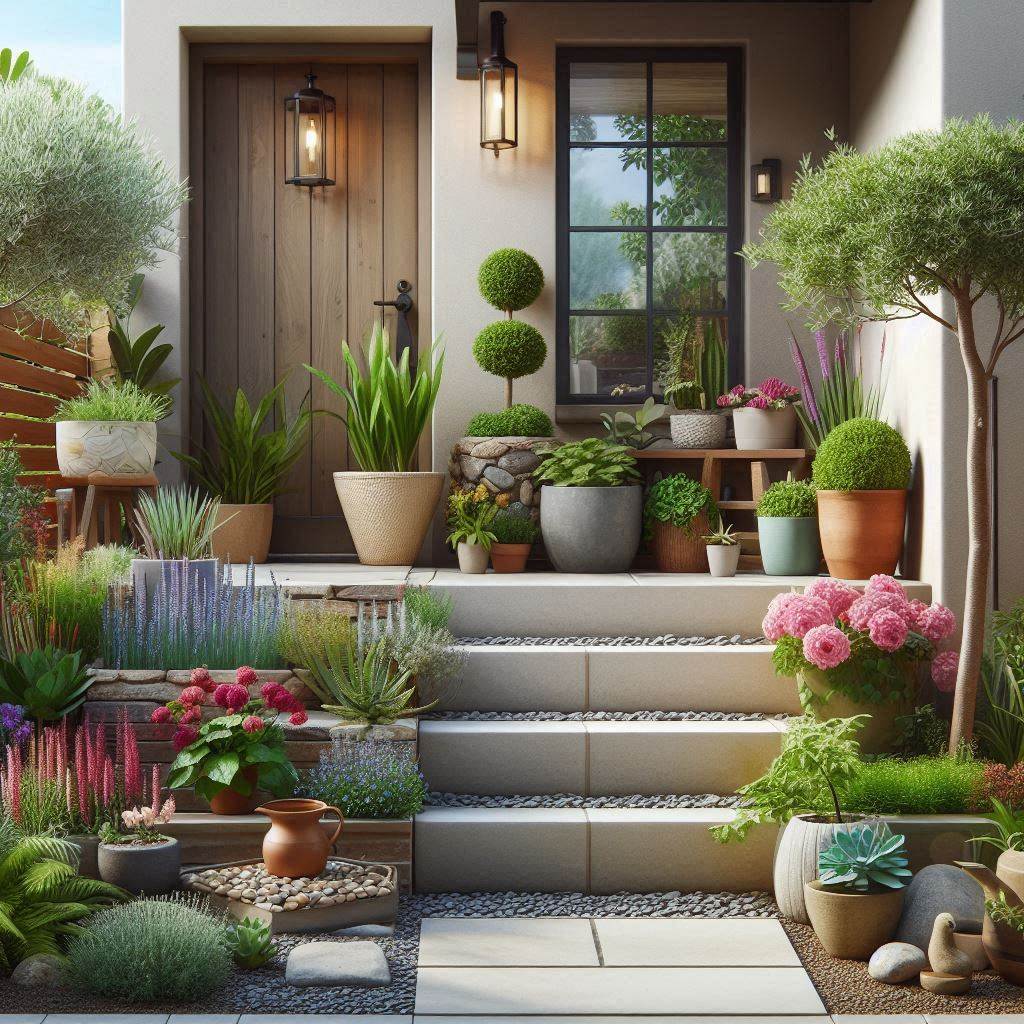
While attracting beneficial wildlife is a great first step, there are additional natural methods you can employ to keep pests at bay in your lazy landscape:
- Companion planting: Certain plants have natural pest-repelling properties. Research companion planting strategies to group plants together that benefit each other. For example, planting nasturtiums near tomatoes can deter aphids.
- Homemade solutions: Consider creating natural insect repellents using household ingredients like neem oil, garlic spray, or soapy water. These solutions can be effective against a variety of soft-bodied insects.
- Encourage natural predators: Provide nesting boxes for birds and other small animals that prey on insects. This can help establish a natural balance in your lazy landscape.
Conclusion
Embrace these 19 lazy landscaping ideas to create a beautiful and low-maintenance yard that allows you to spend less time working and more time enjoying the fruits (or should we say flowers?) of your labor. Remember, a lazy landscape doesn’t have to be boring; with a little planning and the right plant choices, you can achieve a stunning outdoor space that requires minimal effort.
So, avoid the relentless yard work, grab a refreshing drink, and unwind in your very own lazy landscaping paradise!

